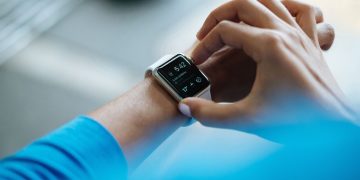At SIGGRAPH 2025, I went hands-on with Tiramisu, Meta’s research prototype that combines beyond-retinal resolution, high brightness, and high contrast, albeit with a narrow field of view.
Since Oculus widely demoed the DK1 over a decade ago, we’ve seen the angular resolution of affordable headsets advance from 6 PPD (pixels per degree), an acuity that would classify a person as legally blind, to now 25 PPD, while higher-end headsets reach 35 PPD, and Varjo XR-4 even achieves 51 PPD in the center.
But how high does the angular resolution of a headset need to be to feel real? Are there diminishing returns? And do the other specs of a display system matter just as much, or even more?
Tiramisu helps to answer some of these questions.
Zuckerberg Wants Meta Headsets To Eventually Pass ‘Visual Turing Test’
Meta’s leaders aim to make VR headsets so advanced people wearing them can’t tell “whether what they’re looking at is real or virtual.” That’s a comment from Meta’s Chief Scientist Michael Abrash, who recently joined CEO Mark Zuckerberg and some of the company’s top
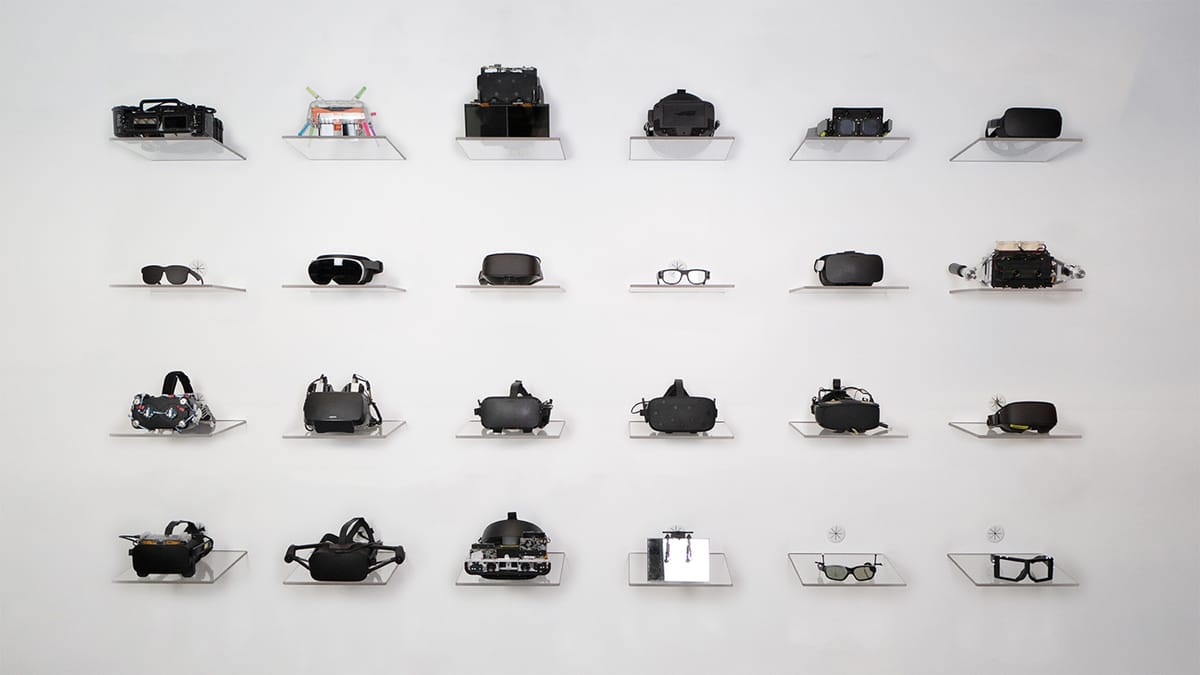
It’s a key step towards Meta’s stated aim of one day passing the “Visual Turing Test”, wherein you’d be unable to tell whether what you were looking at was real or virtual. Put another way, a pass for the Visual Turing Test means you wouldn’t know if you were wearing safety goggles or an XR headset.
What Truly Is “Retinal” Resolution?
In the XR industry, we often say that it’s “generally accepted” that 60 PPD is the limit of what the human eye can discern. Meta’s own blog post about Tiramisu and Boba 3 even repeats this so-called “common knowledge”.
But inside Meta’s research teams, some of the greatest minds in VR have been skeptical of this since the early days of Oculus.
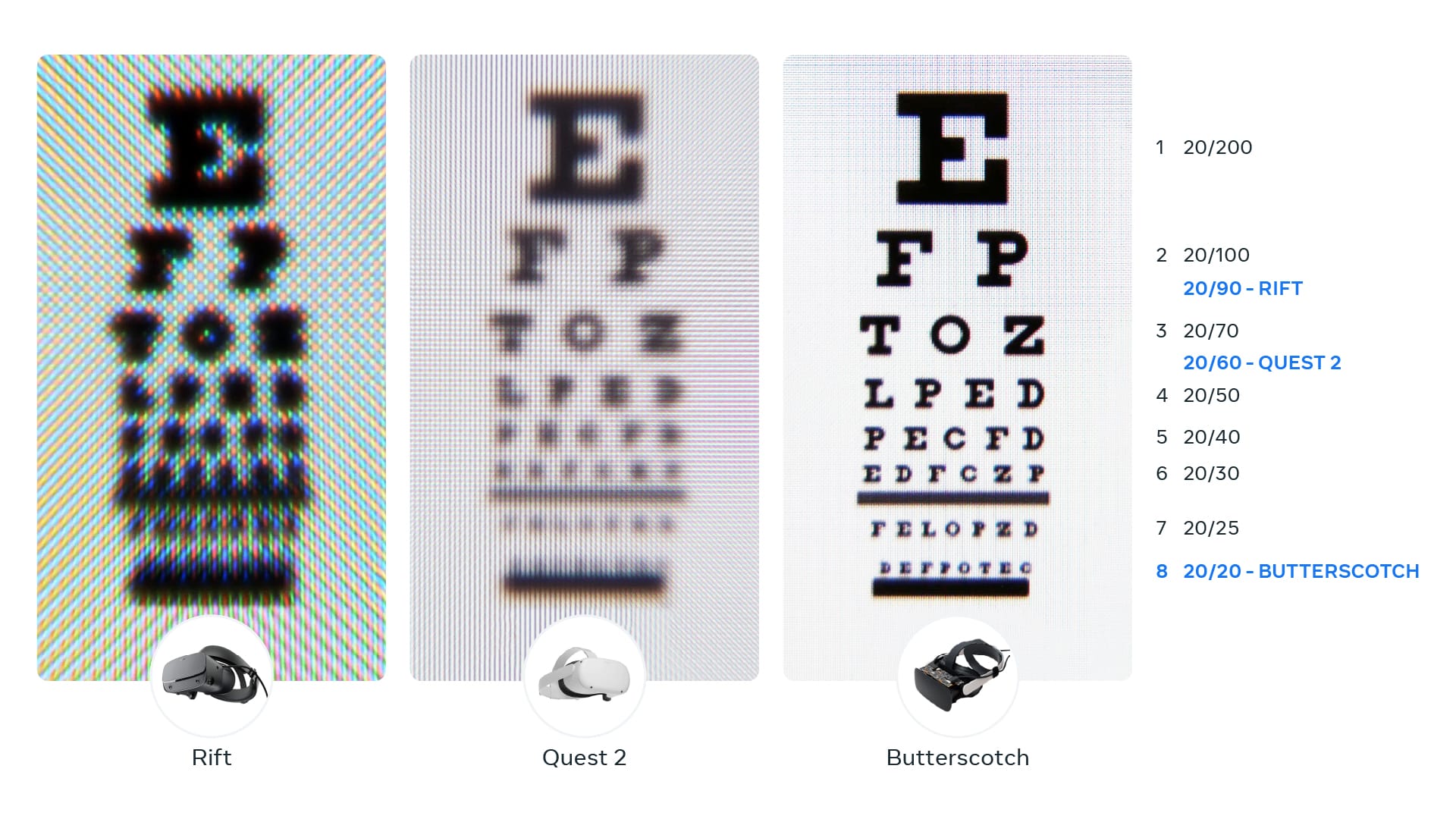
In 2022, Meta presented a prototype called Butterscotch, with an angular resolution of 55 pixels per degree. The tradeoff is that Butterscotch’s field of view is just 50 degrees, but the point of the headset was to research what “retinal” resolution feels like, and figure out where the diminishing returns start, by adjusting the resolution in real-time during testing.
I even went hands-on with an evolution of Butterscotch, called Butterscotch Varifocal, at SIGGRAPH 2023. As the name suggests, it combined “retinal” resolution with varifocal, and the result of this combination of near-retinal angular resolution and dynamic focus adjustment was a view into a virtual world with no visible pixelation or aliasing.
In theory, 60 pixels per degree offers 20/20 vision. But the reality is far more complex.
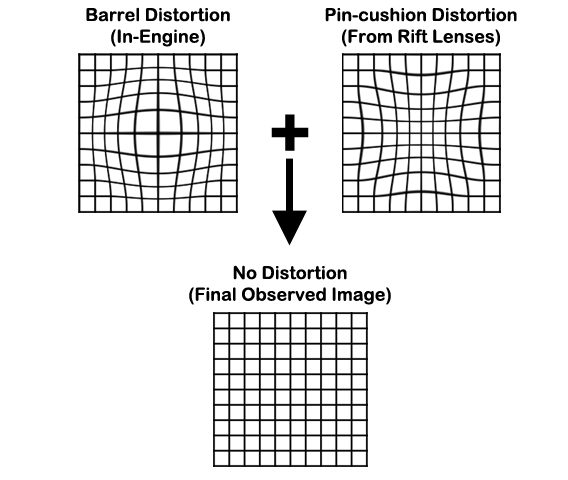
For starters, the way in which pixels are sampled and delivered to your eye in a VR headset is very different from a flat monitor.
A VR system renders a virtual world, sampling from your exact viewpoint, so for text you can’t use flatscreen techniques like aligning the edges of characters to minimize splitting pixels. Further, in VR the image is intentionally barrel-distorted, to match the pincushion distortion of the lenses used to deliver a wide field of view, so there is no true 1:1 mapping of pixels from rendering to vision.
Further, around 30% of people have better than 20/20 vision. So even if this sampling issue did not exist, 60 PPD wouldn’t be the limit for them.
So to prove that the doubts throughout Reality Labs Research about 60 PPD as a limit were well-founded, while incorporating the knowledge from Starburst that brightness and contrast are just as important, the Optics, Photonics, and Light Systems (OPALS) team, built Tiramisu.
OPALS is a sister team of Display Systems Research (DSR), which you may have already heard of, and they often collaborate.
Tiramisu: Approaching The Visual Turing Test
Tiramisu has an angular resolution of 90 PPD, a brightness of 1400 nits, and three times the contrast of Quest 3.
It uses micro-OLED displays, similar to what you’d find in an Apple Vision Pro or Play For Dream MR. To achieve its 90 PPD, it magnifies these displays over a small field of view, of just 33°×33°. Unlike every micro-OLED headset we’ve seen to date, though, Tiramisu does not use pancake lenses.
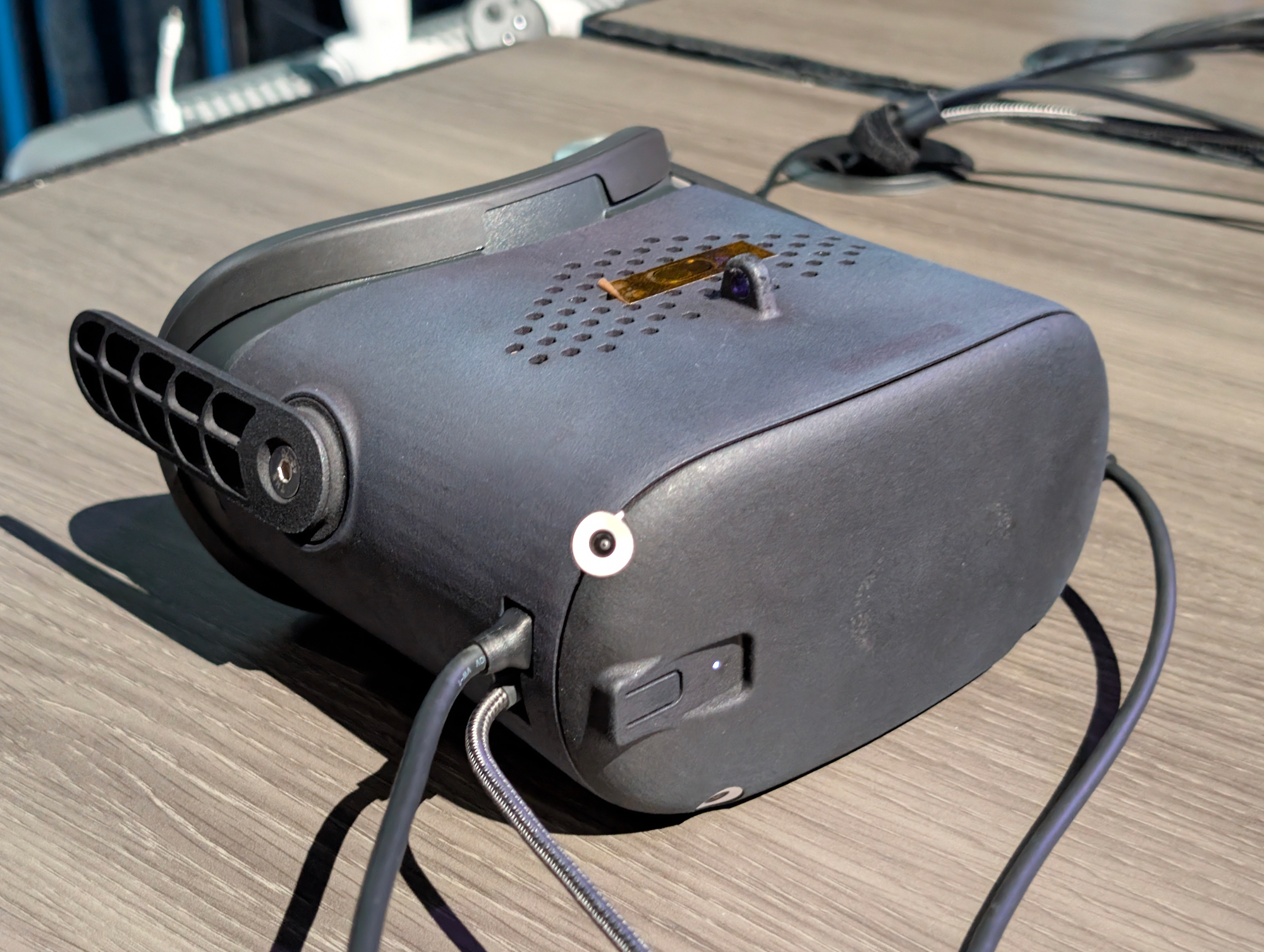
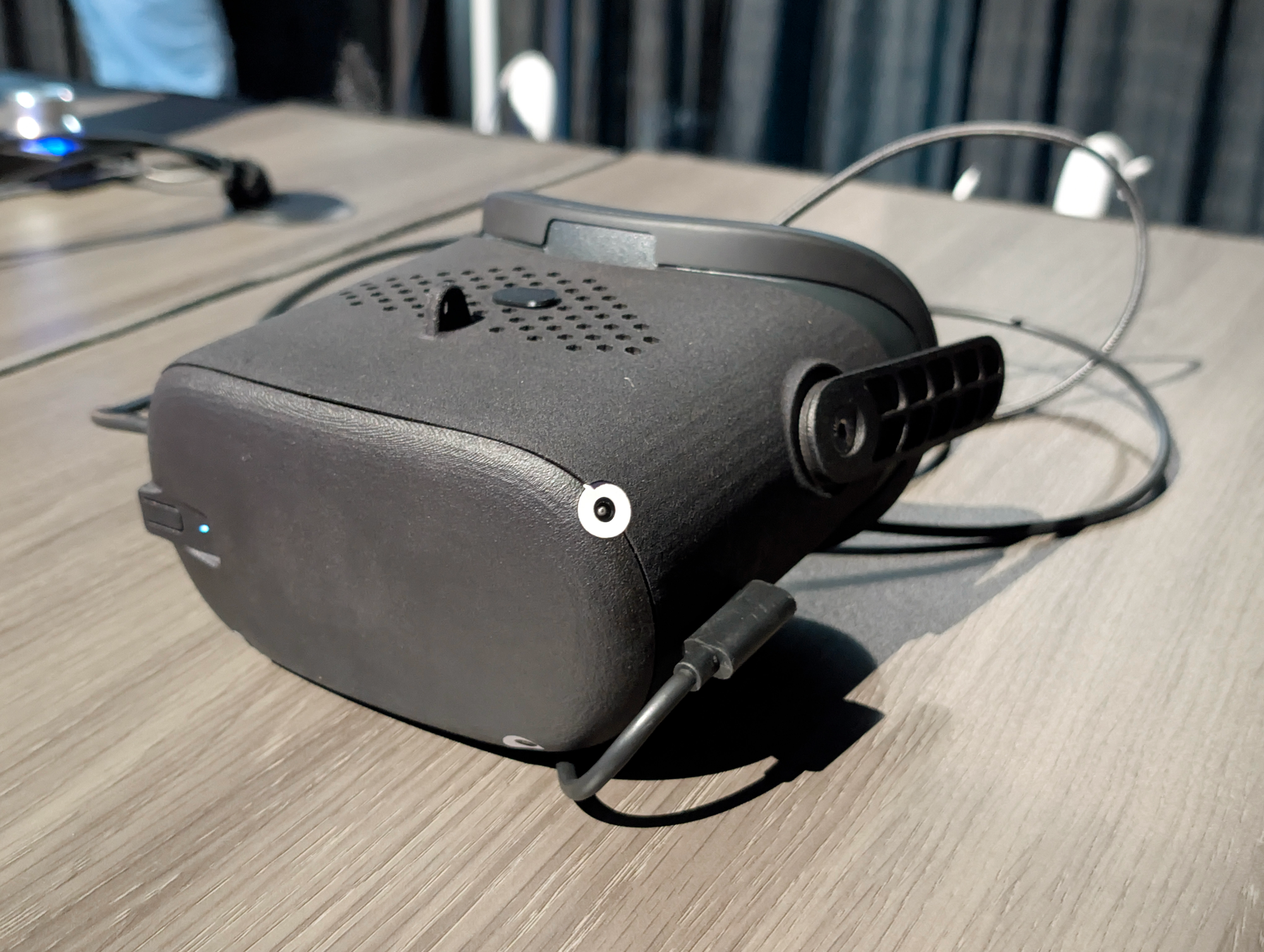
Tiramisu
In recent years, pancake lenses have delivered thinner, sharper headsets. But they also have a significant tradeoff: they have extremely poor optical efficiency. That means the majority of the light passing through them is lost, significantly reducing the brightness delivered to your eye. Future brighter displays can somewhat mitigate this with brute force, but it will not be easy.
Quest 3 and Apple Vision Pro, for example, deliver only around 100 nits to your eyes, despite using very bright displays. For comparison, a typical laptop will reach around 200 nits, while a high-end HDR TV or iPhone Pro reaches over 1000 nits. And the brightness of the sun dwarfs these numbers – a clear sunny day is tens of thousands of nits.
For Tiramisu, OPALS built a custom refractive lens. It consists of three elements made of high refractive index flint glass, which Meta claims correct almost all geometric and chromatic aberrations. Each element is custom made with anti-reflective coatings which enhance contrast and maximize brightness across the full field of view.
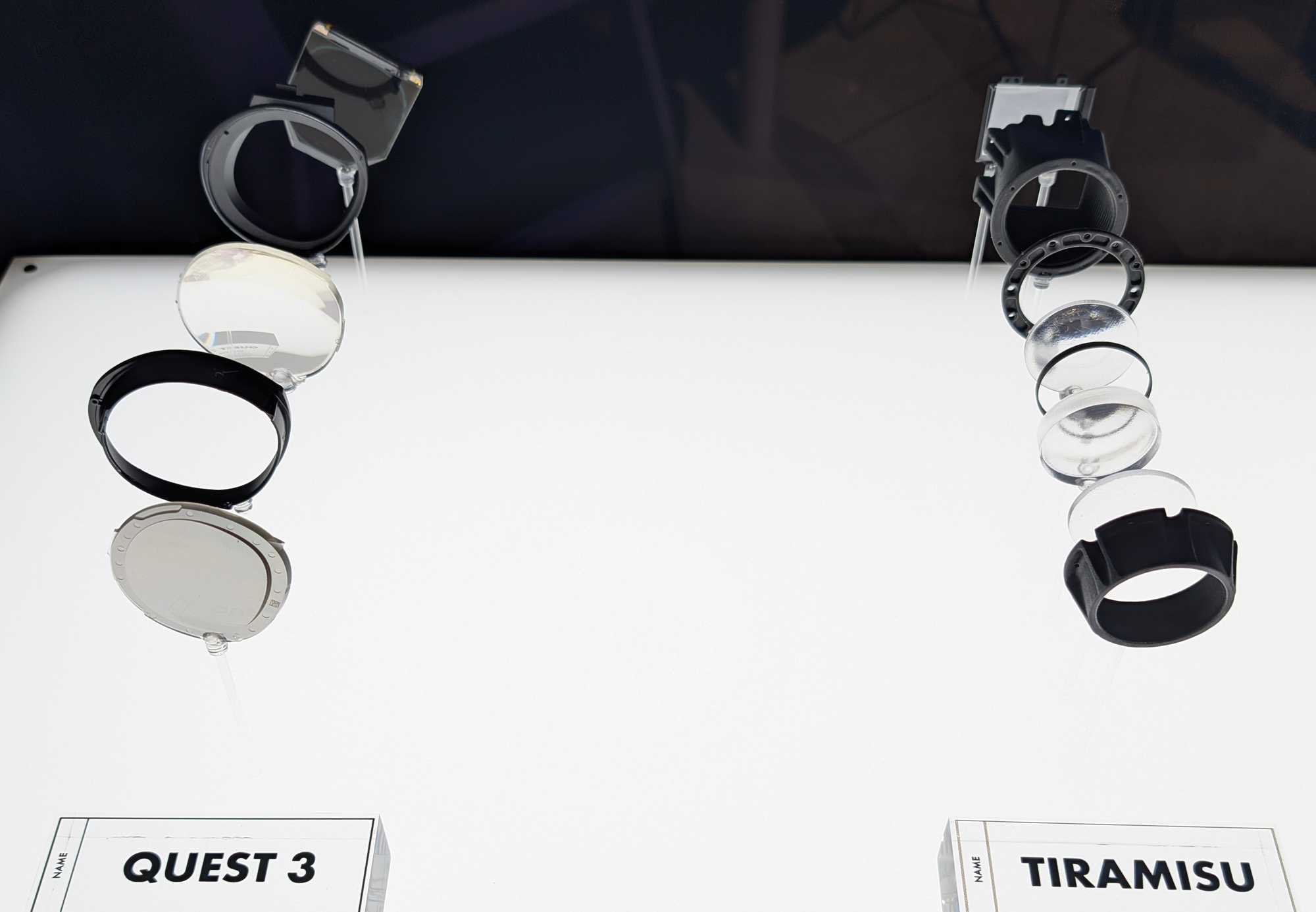
The result is a thick and heavy headset, so much so that Meta’s demo had me hold it up to my face – there was no strap. But it has the resolving power to deliver 90 PPD, and lets through far more of the light than any known pancake optic.
To showcase this, Meta presented a series of Unreal Engine 5 scenes, running off a powerful desktop PC and using Nvidia’s DLSS 3. The primary scene, a park with a map board, leveraged photogrammetry from Quixel Megascans, as well as UE5’s Nanite geometry system and Lumen lighting system.
So what did this look like in practice?
This screen capture does NOT do Tiramisu justice.
Tiramisu’s tiny field of view meant that I was not engulfed in the virtual worlds it presented. But the visual quality of these worlds was nothing short of stunning. A rich, vibrant, highly detailed image with no distortion of any kind, at least to my eye.
In the park scene, even the most subtle contour lines and markings appeared smooth, without any sign of pixelation or aliasing. In an aircraft cockpit on the runway at night, I could make out the ridges and grooves of tiny switches, and looking outside it, the smallest runway edge markers in the distance.
While I wasn’t able to try them back-to-back – it’s been two years now – Meta’s researchers tell me they can definitely see the difference between Butterscotch‘s 55 PPD and Tiramisu’s 90 PPD.
But it was not the angular resolution of Tiramisu that impressed me the most. It was the brightness and contrast.
Starburst: Eyes-In With Meta’s 20K Nit HDR Display Tech
Is high-dynamic range (HDR) the key to next generation VR displays? Hands-on time with Meta’s latest demo and an interview with the head of display systems research suggests it’ll be pretty key. Read on for details. At the recent SIGGRAPH conference in Vancouver David Heaney and I went
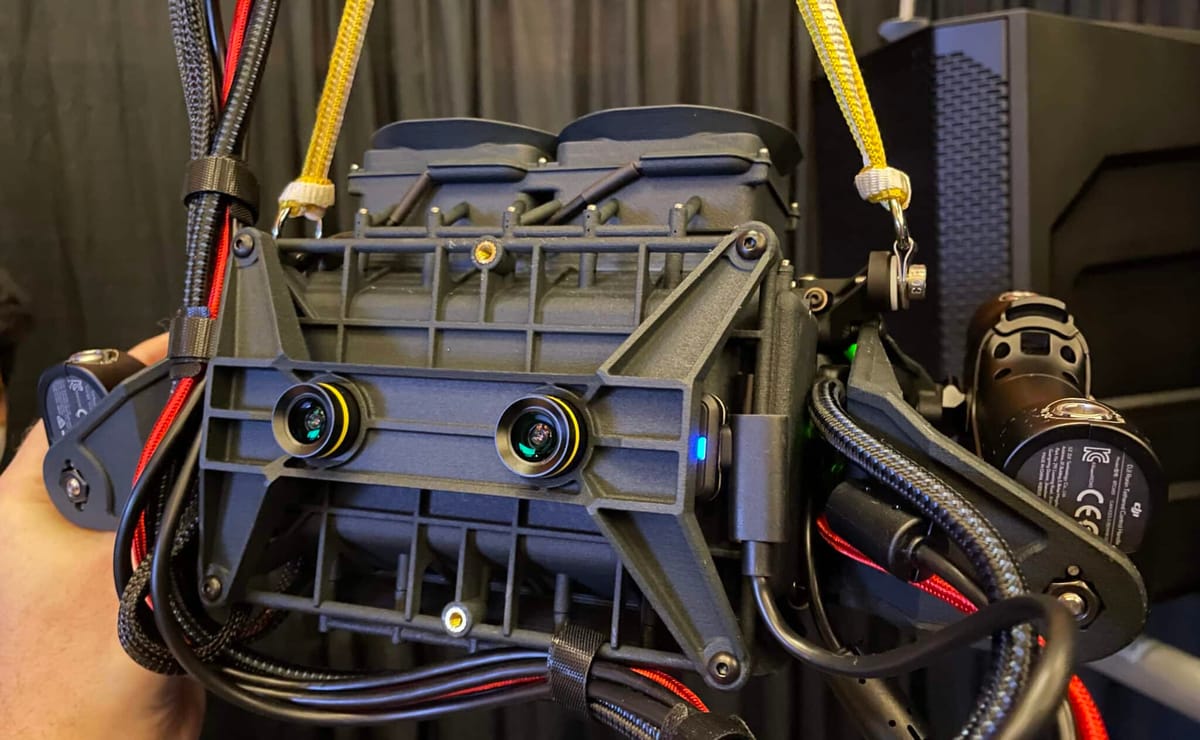
I’ve long argued that brightness is an underappreciated spec of VR displays, and when Ian and I tried Meta’s Starburst prototype at SIGGRAPH 2022, with its monstrous 20,000 nits, it was proof positive.
In Tiramisu, the virtual LEDs on the controls of the aircraft cockpit, and on the runway in the distance, looked truly like emissive light sources. In the Quest 3 beside it, running the same scene, these lights looked like colored stickers in comparison. This sensation of virtual light sources being truly bright, and their contrast to the dark parts of the cockpit, delivered a feeling of realism that far surpassed even Butterscotch.

Further, the increased brightness and contrast even seemed to enhance the sense of depth, despite Tiramisu not being varifocal. This is a strange and poorly understood phenomenon, but has been reported for even 2D HDR TVs with very high brightness.
And beyond that feeling of realism, Tiramisu’s bright and vibrant image was downright pleasant to look at. As the head of DSR, Douglas Lanman said, it was reminiscent of seeing a 4K HDR OLED TV for the very first time – except even more striking.
Tiramisu 2: The Road To Practicality
Unlike Boba 3, Meta couldn’t feasibly ship Tiramisu even if it wanted to. The field of view is far too narrow, and it’s so thick and heavy that it would be almost impossible to make comfortable.
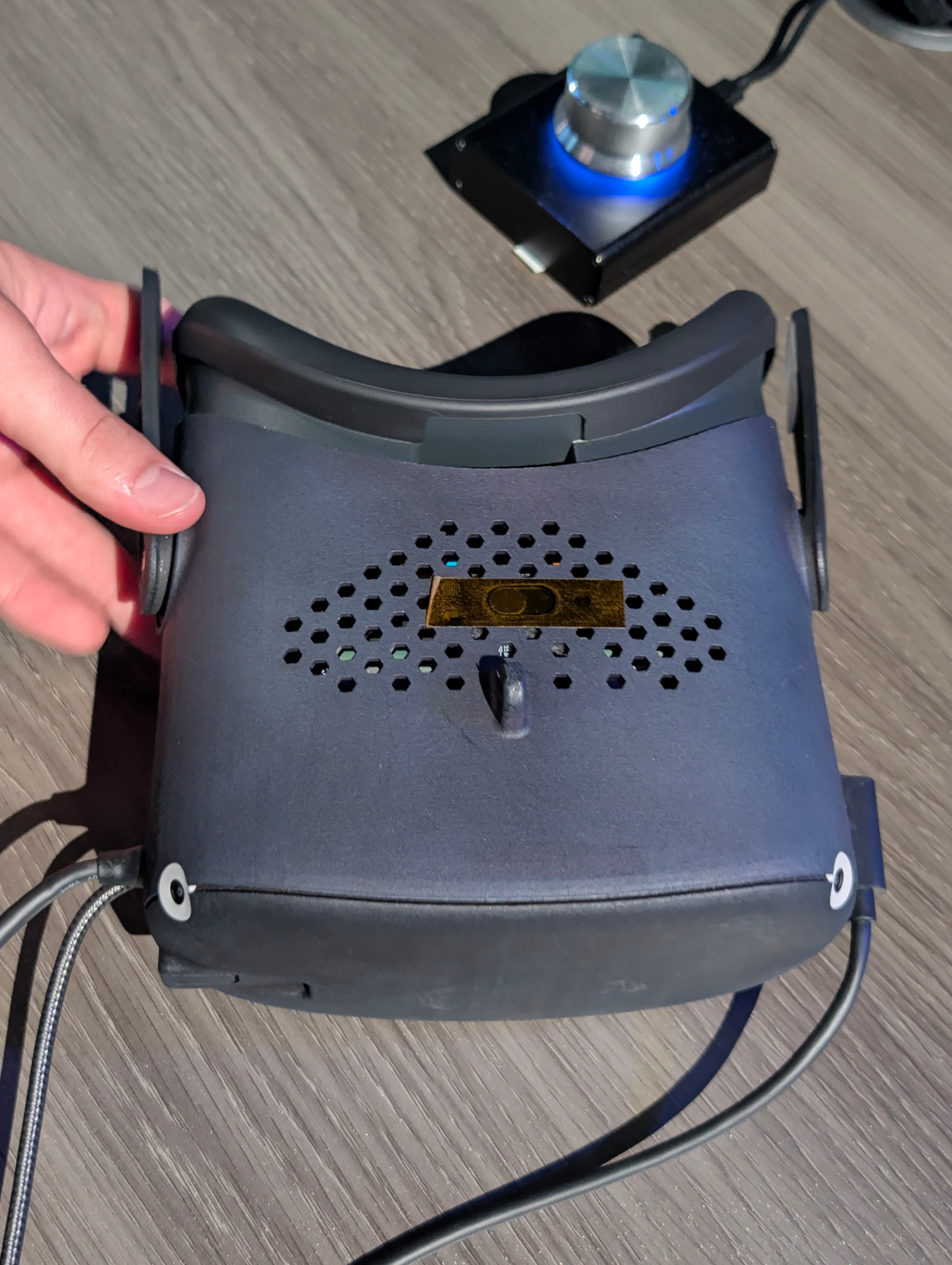
But while Meta did not say anything about future plans in its blog post last week, at SIGGRAPH it was showing the lens stack of a still-in-development headset it calls Tiramisu 2.
| Field Of View | Brightness | Lenses | Display | |
| Quest 3 | 108° | 100 nits | Pancake (23mm thick) |
25 PPD (LCD) |
| Tiramisu | 33° | 1400 nits | Refractive (63mm thick) |
90 PPD (micro-OLED) |
| Tiramisu 2 | 90° | ~700 nits | Refractive + Diffractive (26mm thick) |
60 PPD (micro-OLED) |
Tiramisu 2 looks to balance angular resolution, brightness, and contrast, with field of view and compactness.
While Tiramisu 1 has a refractive lens stack 63mm thick, Tiramisu 2 will combine refractive and diffractive elements, and the result should be 26mm thickness, just a hair above Quest 3’s 23mm. And it should have a field of view of around 90 degrees horizontal, roughly what you got in the original Oculus Rift.
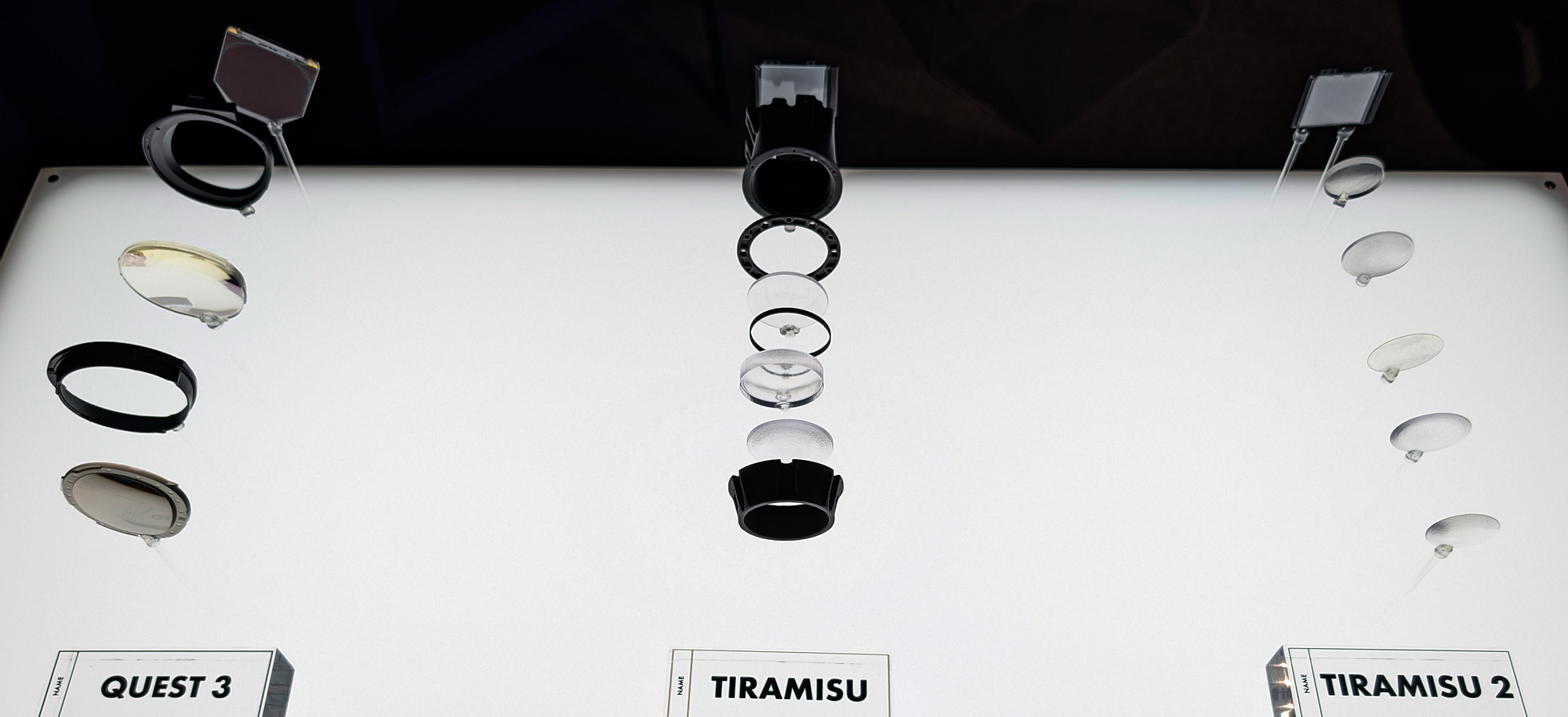
This will come at the cost of some angular resolution and brightness. Tiramisu 2 is targeting 60PPD and 700 nits. But that’s still more than double the angular resolution of Quest 3, and seven times the brightness. These seem like sensible tradeoffs.
Will I see Tiramisu 2 at SIGGRAPH 2026? Geng declined to say. I imagine she probably doesn’t know yet. But I certainly hope I do, as seeing an image even half as realistic as Tiramisu over a 90-degree field of view may challenge my current views about field of view being the most important specification for future shipping VR display systems to push.
Boba 3: Ultra-Wide Field Of View
At SIGGRAPH 2025 I also went hands-on with another Meta prototype headset, called Boba 3, from the DSR team.
Boba 3 has similar angular resolution and the same low brightness and contrast as headsets like Quest 3, but engulfs you in an enormous 180° horizontal by 120° vertical field of view.
Meta Boba 3 Prototype Hands-On: Ultra-Wide Field Of View Without Compromise
We went hands-on with Boba 3, Meta’s practical ultra-wide field of view prototype headset, and it has us more optimistic than ever about the future of VR.
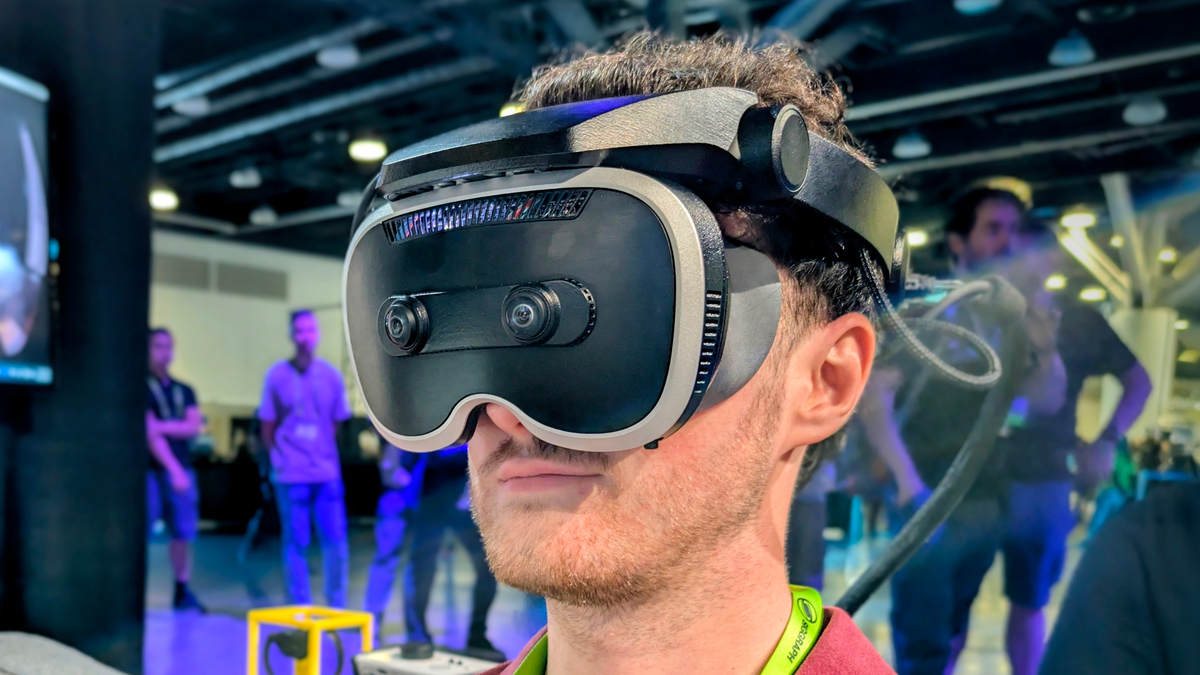
You can read my impressions of Boba 3 here.
Appreciate our reporting? Consider becoming an UploadVR Member or Patron.
Source link
#Stunning #Window #World









